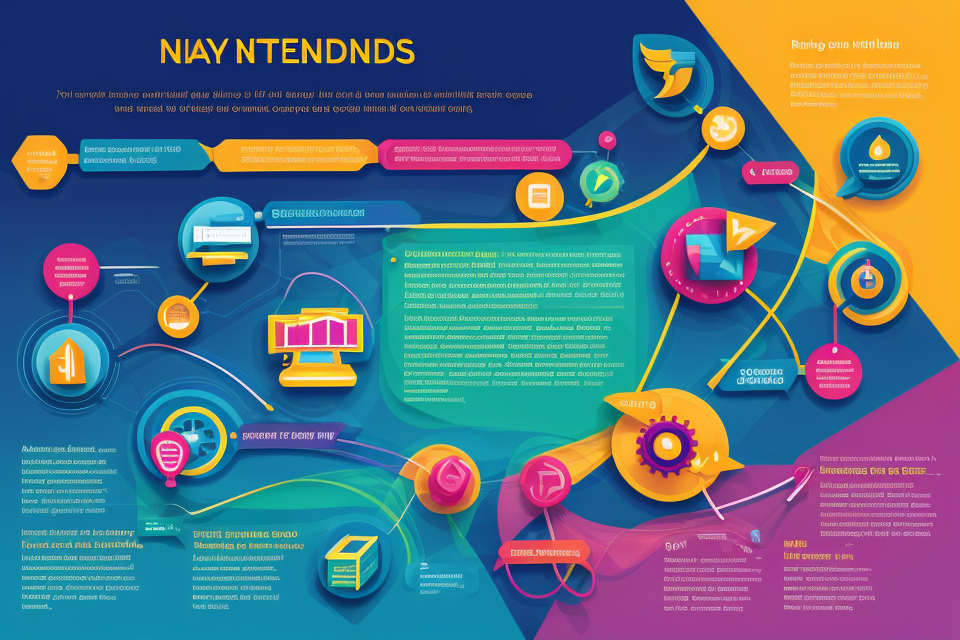Data science is a rapidly growing field that involves analyzing and interpreting large sets of data using various techniques and tools. It has become an essential part of our daily lives, from improving healthcare to optimizing business operations. But is data science mostly math? In this article, we will explore the relationship between data science and mathematics and debunk the myth that math is the sole foundation of data science. Join us as we delve into the world of data science and discover the various other disciplines that contribute to its success.
Data science and mathematics are closely related, as data science heavily relies on mathematical concepts and techniques. Mathematics provides the foundation for many statistical and analytical methods used in data science, such as linear algebra, calculus, probability, and statistics. These mathematical tools are used to analyze, model, and make predictions from data. However, data science also involves other fields such as computer science, domain-specific knowledge, and programming. While a strong foundation in mathematics is important for data scientists, it is not the only skill required, and a well-rounded knowledge of various disciplines is necessary to be successful in the field.
Understanding the Role of Mathematics in Data Science
The Foundation of Data Science: Mathematical Concepts and Principles
Probability and Statistics
Probability and statistics are essential mathematical concepts in data science. Probability theory is used to model and analyze uncertain events, while statistics is used to draw conclusions from data. In data science, probability and statistics are used to analyze and model various types of data, such as time-series data, random data, and data with unknown distributions.
Linear Algebra
Linear algebra is a branch of mathematics that deals with linear equations and their transformations. It is used extensively in data science for tasks such as data representation, dimensionality reduction, and matrix decomposition. In data science, linear algebra is used to model relationships between variables, and to understand the structure of large datasets.
Calculus
Calculus is a branch of mathematics that deals with the study of rates of change and accumulation. It is used in data science to analyze and model dynamic systems, and to understand the behavior of complex systems. In data science, calculus is used to optimize models, to understand the dynamics of systems, and to model the evolution of data over time.
Optimization Techniques
Optimization techniques are used in data science to find the best solution to a problem given a set of constraints. They are used in tasks such as classification, regression, and clustering. In data science, optimization techniques are used to find the optimal parameters for a model, to find the best features for a dataset, and to find the best decision boundary for a classification problem.
The Application of Mathematics in Data Science
- Descriptive Statistics:
- Summary statistics: measures of central tendency (mean, median, mode) and measures of variability (range, interquartile range, standard deviation)
- Frequency distributions: tabular representation of data by count or frequency
- Histograms: graphical representation of the distribution of a continuous variable
- Box plots: graphical representation of the distribution of a variable with outliers and quartiles
- Inferential Statistics:
- Probability theory: principles of probability and random variables
- Hypothesis testing: making inferences about a population based on a sample
- Confidence intervals: estimates of a population parameter with a margin of error
- Statistical significance: determining whether an effect is unlikely to be due to chance
- Regression Analysis:
- Linear regression: modeling the relationship between a dependent variable and one or more independent variables
- Multiple regression: modeling the relationship between a dependent variable and multiple independent variables
- Logistic regression: modeling the relationship between a binary dependent variable and one or more independent variables
- Time series analysis: modeling data collected over time
- Machine Learning Algorithms:
- Supervised learning: training a model to predict an output variable based on input variables
- Linear regression
- Logistic regression
- Decision trees
- Random forests
- Support vector machines
- Unsupervised learning: finding patterns in data without a predetermined output variable
- Clustering
- Association rule mining
- Anomaly detection
- Reinforcement learning: training a model to make decisions based on rewards and punishments
- Q-learning
- Deep Q-networks
- Policy gradients
- Supervised learning: training a model to predict an output variable based on input variables
- Data Visualization:
- Scatter plots: visualizing the relationship between two variables
- Heatmaps: visualizing the distribution of data in a matrix or data frame
- Bar charts: visualizing categorical data
- Box plots: visualizing the distribution of a variable with outliers and quartiles
- Violin plots: visualizing the distribution of a variable with quartiles and a density plot.
Beyond Mathematics: Other Key Components of Data Science
Programming and Software Development
Programming and software development play a crucial role in data science. They enable data scientists to translate their mathematical knowledge into practical applications and to build efficient algorithms that can handle large amounts of data. Some of the programming languages commonly used in data science are Python, R, SQL, Hadoop, and Spark.
Python is a versatile and popular programming language in data science. It offers a wide range of libraries and frameworks that simplify the implementation of complex algorithms and data visualization. Python’s syntax is relatively easy to learn, making it an excellent choice for beginners. Additionally, Python has a large and active community, which provides support and resources for data scientists.
R is another programming language widely used in data science. It is particularly popular among statisticians and data analysts due to its extensive collection of statistical functions and packages. R’s strength lies in its ability to handle and manipulate data, as well as to perform advanced statistical analysis.
SQL (Structured Query Language) is a programming language used to manage relational databases. It is essential for data scientists who work with large datasets, as it allows them to extract, transform, and load data efficiently. SQL is also useful for filtering and aggregating data, enabling data scientists to focus on the most relevant information.
Hadoop is an open-source framework used for distributed storage and processing of large datasets. It consists of two main components: HDFS (Hadoop Distributed File System) and MapReduce. Hadoop allows data scientists to process and analyze big data by distributing the workload across multiple machines.
Spark is another open-source framework used for distributed data processing. It is faster and more efficient than Hadoop, and it can process both batch and real-time data. Spark offers a wide range of libraries and tools for data processing, machine learning, and graph processing.
In summary, programming and software development are crucial components of data science. They enable data scientists to build efficient algorithms, handle large datasets, and perform complex data analysis. Python, R, SQL, Hadoop, and Spark are some of the programming languages and frameworks commonly used in data science.
Domain Knowledge and Subject Matter Expertise
Domain knowledge and subject matter expertise play a crucial role in data science. These skills help data scientists to:
- Understand the data: Data scientists must have a deep understanding of the data they are working with. This includes knowing the data’s structure, quality, and limitations. It also involves being familiar with the data’s context and any underlying assumptions.
- Identify relevant variables: In order to answer a particular research question or solve a specific problem, data scientists must identify the variables that are relevant to the task at hand. This requires knowledge of the domain and the ability to translate real-world problems into mathematical models.
- Interpret results: Data scientists must be able to interpret the results of their analyses in the context of the problem they are trying to solve. This requires domain knowledge to understand the implications of the results and to identify any potential biases or limitations.
In addition to these skills, domain knowledge and subject matter expertise are essential for data scientists to communicate their findings effectively to stakeholders and decision-makers. By understanding the context of the data and the problem being solved, data scientists can ensure that their analyses are relevant and actionable.
Data Wrangling and Preparation
Data wrangling and preparation are crucial steps in the data science process. They involve transforming raw data into a usable format that can be analyzed and interpreted. This process requires a range of skills, including data cleaning, data transformation, and feature engineering.
Data Cleaning
Data cleaning is the first step in data wrangling and preparation. It involves identifying and correcting errors, inconsistencies, and missing values in the data. This process is critical to ensure that the data is accurate and reliable. Common techniques used in data cleaning include removing duplicates, filling in missing values, and standardizing data formats.
Data Transformation
Data transformation involves converting raw data into a format that is suitable for analysis. This process may involve converting data types, aggregating data, or scaling data. For example, converting categorical data into numerical data using techniques such as one-hot encoding or label encoding.
Feature Engineering
Feature engineering is the process of creating new features from existing data to improve the performance of machine learning models. This process involves selecting relevant variables, transforming variables, and creating interaction terms. For example, creating a new feature by multiplying two variables together to capture their interaction.
Overall, data wrangling and preparation are essential components of data science. They require a combination of technical skills and domain knowledge to transform raw data into a format that can be analyzed and interpreted. By carefully cleaning, transforming, and engineering features, data scientists can ensure that their analyses are accurate and effective.
Data Analysis and Interpretation
Data analysis and interpretation play a crucial role in data science, and while mathematical skills are certainly important, they are not the only skills required to be a successful data analyst.
Exploratory Data Analysis (EDA)
Exploratory Data Analysis (EDA) is a critical step in the data analysis process, where data scientists aim to summarize and visualize the main characteristics of the data. This involves using descriptive statistics to quantify the data, as well as creating plots and charts to visualize the data and uncover patterns and relationships. EDA helps data scientists to gain insights into the data and to identify potential issues or outliers that may need to be addressed before further analysis can be performed.
Hypothesis Testing
Hypothesis testing is a statistical method used to test the validity of a hypothesis. It involves making a hypothesis about a population parameter and then using statistical tests to determine whether the results support or reject the hypothesis. Hypothesis testing is commonly used in data science to test the significance of results and to make decisions based on statistical evidence.
Model Evaluation and Selection
Once a model has been developed, it is essential to evaluate its performance to ensure that it is suitable for the task at hand. Model evaluation involves using metrics such as accuracy, precision, recall, and F1 score to assess the model’s performance on a specific task. Once the model has been evaluated, data scientists must select the best model for the task based on the evaluation results and other factors such as computational resources and time constraints.
In summary, data analysis and interpretation are critical components of data science, and while mathematical skills are important, they are not the only skills required to be a successful data analyst. Data scientists must also have a strong understanding of EDA, hypothesis testing, and model evaluation and selection to be able to effectively analyze and interpret data.
Communication and Presentation Skills
Data Storytelling
Data storytelling is a crucial aspect of communication in data science. It involves the art of presenting complex data in a way that is easily understandable and engaging to the audience. A good data storyteller has the ability to identify patterns and insights in data and then present them in a narrative form that connects with the audience on an emotional level.
Data Visualization
Data visualization is another essential skill for effective communication in data science. It involves the use of visual aids such as charts, graphs, and maps to represent data in a more intuitive and comprehensible manner. Good data visualization should be clear, concise, and aesthetically pleasing to the eye.
Effective Communication with Stakeholders
Effective communication with stakeholders is vital in data science. This includes being able to communicate technical information to non-technical people, as well as being able to work collaboratively with cross-functional teams. Data scientists must be able to explain their findings and recommendations in a way that is meaningful to stakeholders, such as business leaders, policymakers, and end-users. They must also be able to receive feedback and incorporate it into their work, as well as negotiate and manage expectations.
The Interdisciplinary Nature of Data Science
Collaboration with Experts in Other Fields
In order to tackle complex problems and projects, data scientists often need to collaborate with experts from other fields. This collaboration ensures that data science solutions are well-rounded and effective. The following are some of the key experts that data scientists may collaborate with:
Business Analysts
Business analysts play a crucial role in data science projects by helping to define the problem, identify the required data, and develop the business case for the project. They are responsible for understanding the business requirements and translating them into data science problems. Data scientists need to work closely with business analysts to ensure that the solution they develop meets the business needs.
Domain Experts
Domain experts are individuals who have a deep understanding of a particular industry or field. They can provide valuable insights into the problem being solved and the data that is required. Data scientists need to work closely with domain experts to ensure that they have a good understanding of the problem and the data. This collaboration can help to ensure that the solution developed is relevant and effective.
Data Engineers
Data engineers are responsible for designing and building the infrastructure that is required to support data science projects. They are responsible for ensuring that the data is available, accessible, and of high quality. Data scientists need to work closely with data engineers to ensure that they have access to the data they need and that the data is in a format that is suitable for analysis.
Data Privacy and Ethics Experts
Data privacy and ethics experts are responsible for ensuring that data science projects comply with all relevant laws and regulations. They are also responsible for ensuring that the data is collected, stored, and used in an ethical manner. Data scientists need to work closely with data privacy and ethics experts to ensure that the data they use is collected and used in a way that is compliant with all relevant laws and regulations.
In summary, collaboration with experts from other fields is crucial for the success of data science projects. By working closely with business analysts, domain experts, data engineers, and data privacy and ethics experts, data scientists can ensure that their solutions are well-rounded and effective.
Integration of Data Science with Business Strategy
Problem Identification and Formulation
Data science plays a crucial role in identifying and formulating problems for businesses. It involves analyzing and interpreting complex data sets to uncover insights that can inform strategic decision-making. Data scientists work closely with business leaders to understand their objectives and develop questions that can be answered through data analysis. This collaborative process helps to ensure that the insights generated by data science are relevant and actionable for the business.
Decision-making Support
Data science provides critical support for decision-making in businesses. By analyzing data, data scientists can identify patterns and trends that can inform strategic decisions. For example, data science can be used to optimize pricing strategies, identify new market opportunities, and predict customer behavior. By providing data-driven insights, data science helps businesses make more informed decisions that can improve their competitiveness and profitability.
Predictive Analytics
Predictive analytics is a key component of data science that is particularly relevant for businesses. By analyzing historical data, data scientists can develop predictive models that can forecast future trends and behaviors. This can help businesses anticipate customer demand, identify potential risks, and optimize resource allocation. Predictive analytics can also be used to identify potential fraud and security threats, helping businesses to protect themselves from financial losses and reputational damage.
Optimization
Data science can also be used to optimize business processes and operations. By analyzing data on customer behavior, supply chain management, and production processes, data scientists can identify areas where improvements can be made. For example, data science can be used to optimize pricing strategies, reduce waste and improve efficiency in manufacturing, and improve customer service. By applying data science techniques to business operations, companies can reduce costs, increase revenue, and improve their competitiveness in the marketplace.
Debunking the Myth: Data Science is Not Just Math
The Limitations of Mathematics in Data Science
Mathematics is a crucial component of data science, but it is not the only one. There are several limitations of mathematics in data science that must be considered.
- Real-world Complexity: Real-world data is often messy and complex, with missing values, outliers, and non-linear relationships. Mathematics alone cannot fully capture the complexity of real-world data.
- Unstructured Data: Data science often deals with unstructured data, such as text, images, and videos. Mathematics is not well-suited to handle unstructured data, which requires techniques from computer science and statistics.
- Ethical Considerations: Data science involves making decisions that can have significant ethical implications, such as predicting criminal behavior or determining creditworthiness. Mathematics alone cannot provide guidance on how to make ethical decisions.
- Interpretability and Explainability: Machine learning models, which are heavily reliant on mathematics, can be difficult to interpret and explain. This lack of transparency can lead to issues with accountability and trust.
These limitations of mathematics in data science highlight the importance of a multidisciplinary approach that incorporates techniques from computer science, statistics, and other fields.
The Importance of a Holistic Approach
Integrating Mathematical Foundations with Other Skills
While mathematics is undoubtedly a crucial component of data science, it is not the only factor that contributes to a data scientist’s success. In order to be well-rounded and effective in their work, data scientists must integrate their mathematical foundations with other skills, such as programming, data management, and domain-specific knowledge.
By developing proficiency in multiple areas, data scientists can approach problems from different angles and select the most appropriate tools and techniques for each situation. This versatility allows them to adapt to new challenges and navigate the rapidly evolving landscape of data science.
Balancing Technical Expertise with Domain Knowledge
Data science often involves working with complex, real-world problems that require a deep understanding of the underlying domain. This is why it is essential for data scientists to balance their technical expertise with domain knowledge.
Domain knowledge refers to the understanding of the specific industry, field, or problem area in which the data science project is being conducted. This knowledge helps data scientists identify relevant data sources, interpret results, and communicate findings effectively to stakeholders.
Balancing technical expertise with domain knowledge is crucial because it enables data scientists to develop solutions that are both technically sound and practically applicable. It also allows them to identify potential pitfalls and address them before they become significant issues.
Effective Communication and Collaboration
Effective communication and collaboration are critical components of a holistic approach to data science. Data scientists must be able to articulate their findings and recommendations clearly and concisely, regardless of their audience’s level of expertise.
This requires not only strong written and verbal communication skills but also the ability to tailor messages to different audiences. By doing so, data scientists can ensure that their work has a meaningful impact on the organizations they serve.
Furthermore, collaboration is key in data science, as it often involves working with cross-functional teams and integrating diverse perspectives. Data scientists must be adept at building relationships, fostering trust, and facilitating open dialogue to achieve their goals.
In summary, a holistic approach to data science involves integrating mathematical foundations with other skills, balancing technical expertise with domain knowledge, and prioritizing effective communication and collaboration. By adopting this approach, data scientists can become well-rounded professionals who can navigate the complexities of their field and deliver valuable insights to their organizations.
FAQs
1. Is data science mostly math?
Data science is a multidisciplinary field that involves various skills and disciplines, including mathematics. While mathematics is an important component of data science, it is not the only one. Data science also involves other areas such as statistics, computer science, programming, and domain-specific knowledge.
2. What kind of math is used in data science?
Data science requires a strong foundation in mathematics, including topics such as calculus, linear algebra, probability, and statistics. These mathematical concepts are used to develop algorithms, analyze data, and build predictive models.
3. Do I need to be a math expert to become a data scientist?
While a strong foundation in mathematics is important for data science, it is not the only requirement. Data science also requires skills in programming, data analysis, and problem-solving. So, while math is an important aspect of data science, it is not the only determinant of success in this field.
4. How can I improve my math skills for data science?
Improving your math skills for data science involves consistent practice and exposure to mathematical concepts. You can start by reviewing basic mathematical concepts such as algebra, calculus, and statistics. You can also take online courses or enroll in mathematics programs to develop a deeper understanding of mathematical concepts.
5. What are some other important skills for data science besides math?
In addition to mathematics, data science requires skills in programming, data analysis, and problem-solving. Programming skills are essential for developing algorithms and working with data. Data analysis skills are important for interpreting and visualizing data. Problem-solving skills are crucial for identifying patterns and trends in data and developing solutions to real-world problems.



